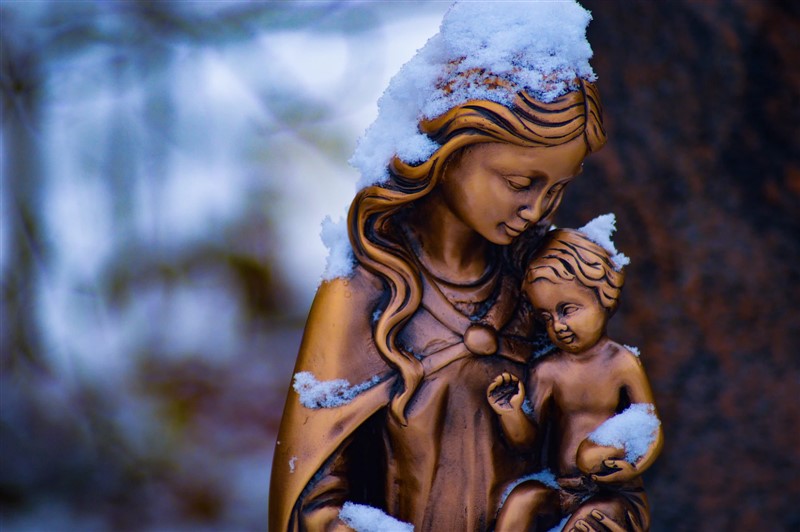Do you know the meaning of the song Ave Maria? This article will provide you with all of the information you need on the song Ave Maria, including its meaning, origin, usage, lyrics, and more!
-
Kevin
-
 August 7, 2021
August 7, 2021
-
 Common Questions
Common Questions
 August 7, 2021
August 7, 2021
 Common Questions
Common Questions
Do you know the meaning of the song Ave Maria? This article will provide you with all of the information you need on the song Ave Maria, including its meaning, origin, usage, lyrics, and more!
According to Galaxy Music Notes, “Ave Maria” is a song by Franz Schubert. This is also known as “Hail Mary” in English or “Ellens Gesang III” or “Ellens dritter Gesang” in German, which translates to “Ellen’s Third Song.” This is an 1825 song by Austrian maestro Franz Schubert, and comes from Sir Walter Scott’s famous poem, “The Lady of the Lake.” The lyrics to the song are also now used in the Roman Catholic prayer, which bears the same name. The pronunciation of Ave Maria is ah-vay muh-ree-uh.
In the poem, Ellen Douglas who is known as Loch Katrine in the Scottish Highlands is banished to live with her exiled father in what is known as the Goblin’s cave. Ha declined to join their host, Roderick Dhu, in rebellion against King James. Roderick tries to finish them and travels up the mountain with his warriors.
While the song was composed as a prayer, it was not planned to have any religious utilization in Catholicism or the Roman Catholic Church or even to be about the Virgin Mary. This was solely based on the poem. In the German title, the name Ellen referred to Ellen Douglas, who was the primary character and heroine of Scott’s poem. The composer stumbled upon the German translation of Scott’s poem called Das Fräulein vom See by Adam Storck, and saw it as a viable source for musical composition. He composed it with one singer and one pianist in mind, though there ended up being three piano versions by Franz Liszt. This song is a part of Liederzyklus vom Fräulein vom See and is one of Schubert’s most successful works. Roman Catholics and others know this traditional Catholic prayer of angelic salutation, devotion and honor well. Many different covers have been made over the years from people like Amanda Thompson and Lesley Garrett. It is used at a particular time in Italy, at the ringing of the bells half an hour after sunset, and at early dawn. This song is also commonly heard at both weddings and funerals and relates to the soul. The final portion of the song

Today, this is one of many popular works and has renditions by German composer Johann Sebastian Bach, French composer Charles Gounod, and Russian composer Vladimir Vavilov, which is often misattributed to Italian composer Giulio Caccini. In this prayer, Schubert’s melody is often used as a backdrop for the full text of the traditional Roman Catholic prayer. This is also known as the Latin name of the prayer hail Mary, and is based on the salutation of the angel Gabriel to the Virgin Mary and the words of Elizabeth to the Virgin Mary as well. People often use the beads or bead on a rosary used to count off each prayer as spoken. This song is also used in the Walt Disney film Fantasia, on Modest Mussorgsky’s Night on Bald Mountain.
The song Ave Maria is traditionally sung in Medieval Latin, but there is also an English translation and a German translation. The lyrics to both of the versions of this song are below in italics, from Classical Music. The opening words are also the title of the song in the refrain of Ellen. The final portion of the song identifies Mary’s holiness and adds a petition for intercession.
LATIN
Ave Maria, gratia plena,
Maria, gratia plena,
Maria, gratia plena,
Ave, Ave, Dominus,
Dominus tecum.
Benedicta tu in mulieribus, et benedictus,
Et benedictus fructus ventris tui,
Ventris tui, Iesus.
Ave Maria!
Sancta Maria, Mater Dei,
Ora pro nobis peccatoribus,
Ora, ora pro nobis;
Ora, ora pro nobis peccatoribus,
Nunc et in hora mortis,
In hora mortis nostrae.
In hora, hora mortis nostrae,
In hora mortis nostrae.
Ave Maria!
ENGLISH
Hail Mary, full of grace,
Mary, full of grace,
Mary, full of grace,
Hail, Hail, the Lord
The Lord is with thee.
Blessed art thou among women, and blessed,
Blessed is the fruit of thy womb,
Thy womb, Jesus.
Hail Mary!
Holy Mary, Mother of God,
Pray for us sinners,
Pray, pray for us;
Pray for us sinners,
Now, and at the hour of our death,
The hour of our death.
The hour, the hour of our death,
The hour of our death.
Hail Mary!
GERMAN
Ave Maria! Jungfrau mild,
Erhöre einer Jungfrau Flehen,
Aus diesem Felsen starr und wild
Soll mein Gebet zu dir hinwehen.
Wir schlafen sicher bis zum Morgen,
Ob Menschen noch so grausam sind.
O Jungfrau, sieh der Jungfrau Sorgen,
O Mutter, hör ein bittend Kind!
Ave Maria!
Ave Maria! Unbefleckt!
Wenn wir auf diesen Fels hinsinken
Zum Schlaf, und uns dein Schutz bedeckt
Wird weich der harte Fels uns dünken.
Du lächelst, Rosendüfte wehen
In dieser dumpfen Felsenkluft,
O Mutter, höre Kindes Flehen,
O Jungfrau, eine Jungfrau ruft!
Ave Maria!
Ave Maria! Reine Magd!
Der Erde und der Luft Dämonen,
Von deines Auges Huld verjagt,
Sie können hier nicht bei uns wohnen,
Wir woll’n uns still dem Schicksal beugen,
Da uns dein heil’ger Trost anweht;
Der Jungfrau wolle hold dich neigen,
Dem Kind, das für den Vater fleht.
Ave Maria!
Overall, the song Ave Maria composed by Franz Schubert in 1825 as part of his Op. 52, and was based on Walter Scott’s popular narrative poem The Lady of the Lake. These are also the first two words of the Latin version of a prayer in the Catholic church. Th4e recitation of this prayer is common.